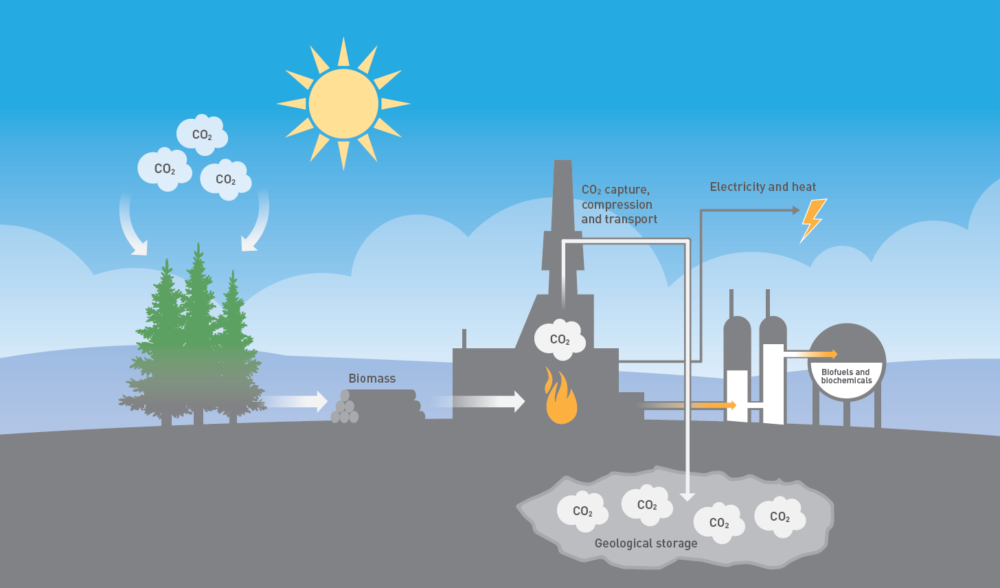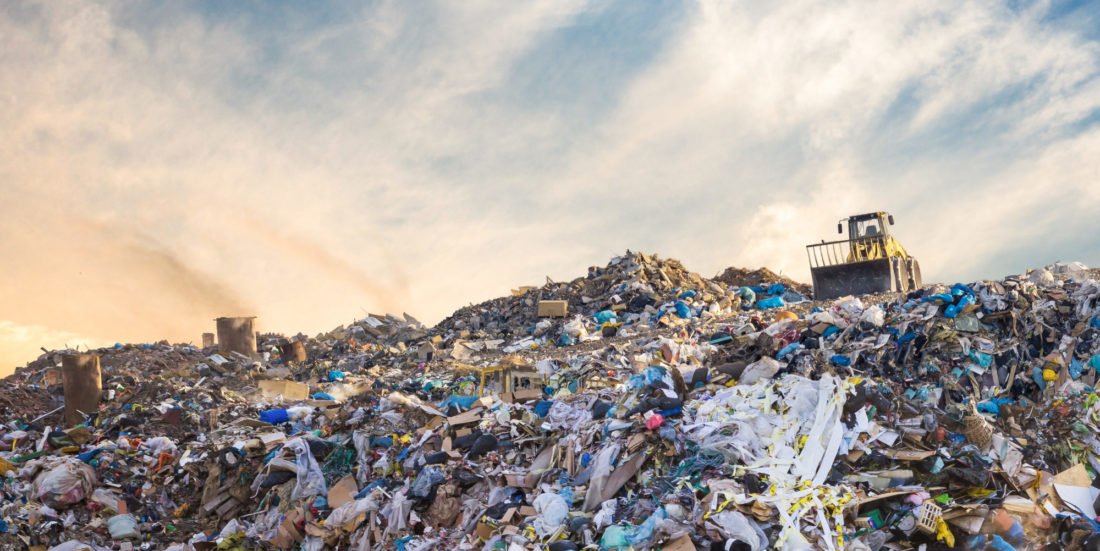CCS during waste incineration removes CO2 from the atmosphere
The capture and storage of CO2, also known as CCS, from our waste is essential because this refuse is responsible for a large proportion or our cities’ greenhouse gas emissions. Moreover, the technology represents a relatively inexpensive abatement cost.
In order to achieve the targets set out in the Paris Agreement, aiming to keep global warming to within 1.5 degrees higher than pre-industrial levels, it will not be sufficient simply to reduce emissions. We must also actively remove CO2 from the atmosphere and establish a balance between emissions and removal.
Not all industries will be able to achieve net zero emissions by 2050. The agricultural sector is a good example. But if we are to achieve total net zero emissions during the next 30 years, we have to capture one CO2 molecule and remove it from the atmosphere for every molecule we release. With between 50 and 70 percent biological material currently being processed in energy recycling plants employing waste incineration, this will make a considerable difference to our carbon accounting.
What does ‘climate-positive’ mean?
Let’s say that you throw away a set of IKEA’s Ivar storage shelves and it ends up in an incineration plant. The shelves contain CO2 extracted from the air by the wood while the tree was living. So, in principle, if we incinerate this wood the entire cycle is carbon neutral. The same amount of the gas is released on incineration as was originally taken up. But if we capture and remove the CO2 during incineration, we also extract some CO2 from the cycle and make a positive contribution to the carbon budget.

This schematic illustrates the principles of the capture and storage of CO2 from biomass – a so called “climate-positive” solution. Illustration: Doghouse/Knut Gangåssæter.
Of course there will be hurdles to negotiate, but these are also created by humans. How we calculate and reward climate-positive approaches is currently unclear, not least within the EU. I have been in Brussels for some years now, and the debate continues to rage about how fast it is possible to store the CO2 locked in biological material. It is argued that this will take longer than the 30-year perspective leading up to 2050.
“During the next 30 years, we have to capture one CO2 molecule and remove it from the atmosphere for every molecule we release.”
There is some misunderstanding, and a constructive dialogue is being launched on this topic as a basis for the formulation of regulations governing sustainable investment. Or “sustainable taxonomy” as it is referred to in EU jargon.
But we mustn’t let such things prevent us from taking action. There is no doubt that climate-positive systems have to be implemented if we are to achieve carbon neutrality. Globally, we have to remove between five and ten billion tonnes net of greenhouse gases from the atmosphere by 2050. In Norway, the figures are about the same, but here at home we’re talking millions, not billions of tonnes. Our ability to achieve this will depend on the measures that we implement and which of these has the greatest impact.
And we have to bear in mind that such measures involve technologies that must be applied in addition to, and not simply replace, other initiatives such as electrification and lifestyle changes.
What does Brussels have to say about CCS?
Brussels views CCS as a necessary measure. There is no doubt that it is essential if we are to achieve the decarbonisation of industry and the transport sector, to provide heat and power, and to open the door to the use of hydrogen, which can also be generated from biomass using CCS. But we need countries that can lead the way, with vision that extends beyond the end of their noses. In my view, our towns and cities must be closely linked to the Norwegian full-scale project. And why not establish links to other urban initiatives taking place across Europe? We all know that passivity is much more expensive for society than taking proactive steps.
We must link CCS to wealth generation
The smart things to do are to develop a CO2 transport infrastructure across national boundaries and link CCS to wealth generation and climate-positive initiatives. In this regard, our waste materials are very well suited to such concepts, and it is quite simply amazing to see that others as well as Norway are taking up the challenge. This is not a race to be first to the finishing line considering that we need a few thousand full-scale plants in operation if we are to meet the targets set out in the Paris Agreement.
As President of the European Energy Research Alliance (EERA). I have been observing the ups and downs of the CCS debate. The challenge of climate change and the overriding political ambition within the EU to achieve net zero emissions by 2050 demand that we implement all the measures we can lay our hands on. I often say that the most expensive climate change mitigation measures are the ones we don’t implement. We all know that passivity is much more expensive for society than taking proactive steps.
“And we have to bear in mind that such measures involve technologies that must be applied in addition to, and not simply replace, other initiatives such as electrification and lifestyle changes.”
The project “Longship” is crucial
On September 21st, the government announced that they would support the implementation of CO2 capture, transport and storage in Norway. The project was named “Langskip” (Norwegian for Longship). It is crucial that Longship gets linked to our European partners. I am already getting enquiries from Austria (among others) about when they can deliver CO2 to the project.
In the Longship project, the government suggests as a first step to introduce carbon capture at the Norcems cement factory. The government will support CO2 capture at the Fortum Oslo Varmes waste processing plant in Oslo, but first they must secure more funding from the EU Innovation Fund. The fund contains about 1 billion euros, but there is fierce competition: no less than 311 applicants have shown interest, asking for funding totalling 21 billion euros.
CCS is about Norway’s long-term success
The consequences of having or not having full scale CCS in Norway cannot be overestimated. It is quite simply the same as having a car with or without a road. Cities can play a decisive role by following Klimakur’s conclusions, and ambitions can already now be raised. Brussels is tired of hearing about CCS ambitions and wants to see action and real investments in actual projects.
By and large, CCS is about Norway’s long-term success. Starting with job creation and cities is a good plan – but we have to actually do it.
This blog was first posted on #SINTEFblog 2020.


